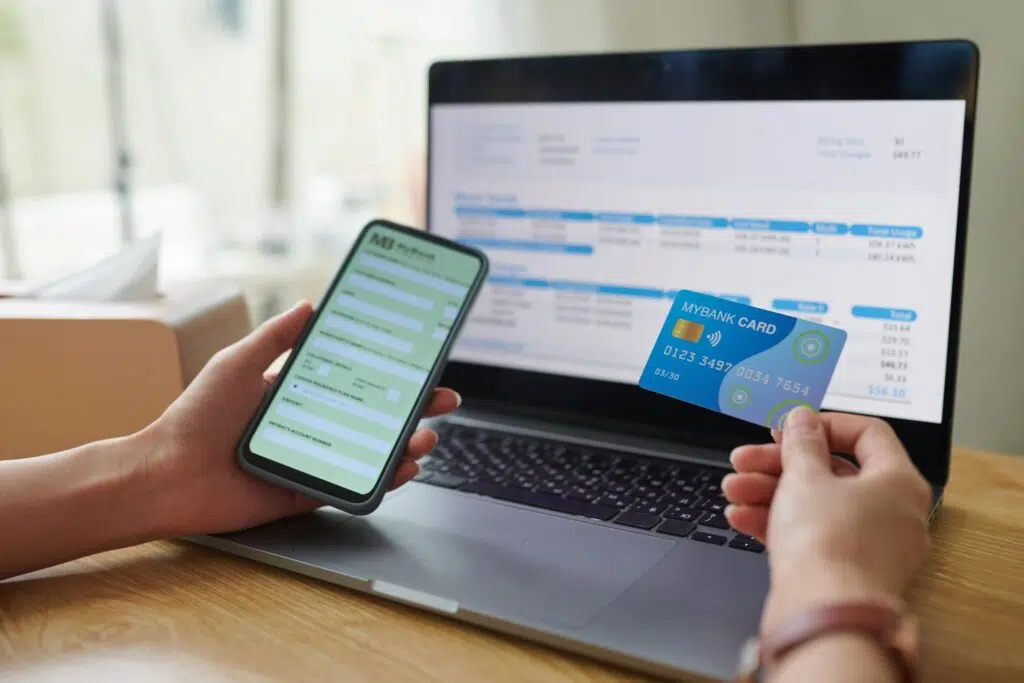When it comes to running a successful e-commerce business, one of the key strategies is to convert browsers into buyers. Understanding the behaviour of these two distinct groups – browsers and buyers – is crucial in optimising your e-commerce conversion optimisation rates and ultimately increasing sales.
Understanding Browsers and Buyers

In the realm of e-commerce, a browser refers to a potential customer who is currently in the process of actively shopping online but has not made a purchase yet. On the other hand, a buyer is someone who has completed a purchase on your website. The goal for any retailer is to turn these browsers into buyers, thus increasing the overall revenue and success of the business.
Definition of Browsers and Buyers in E-commerce
The difference between a browser and a buyer lies in their actions on your e-commerce platform. Browsers may spend time scrolling through products and adding items to the cart, but they may not complete the checkout process by making a purchase. Buyers, on the other hand, have successfully gone through the entire shopping experience and have converted by making a purchase.
Difference Between Browsing and Buying Behaviour
Browsing behaviour usually involves exploring different products, comparing prices, and reading customer reviews. Buying behaviour, on the other hand, is characterised by the final decision to make a purchase. Converting browsers into buyers requires a deep understanding of the factors that motivate customers to move from browsing to purchasing.
Importance of Converting Browsers into Buyers
The process of converting browsers into buyers is essential for the success of any online retailer. By optimising the shopping experience, providing personalised product recommendations, and offering seamless checkout processes, retailers can increase their conversion rates and boost sales. Ultimately, focusing on turning browsers into buyers can help e-commerce businesses thrive in a competitive market.
Simplifying the Buying Journey
Ease is paramount. Your landing page should effortlessly guide users towards making a purchase. Essential information such as product details, pricing, delivery options, and call-to-action buttons should be prominently displayed, especially on mobile devices where screen space is limited.
Strategies to Convert Browsers into Buyers

Converting browsers into buyers is a critical aspect of boosting e-commerce sales. Here are some effective strategies to achieve this:
Optimising Website for Conversion
One of the first steps in turning browsers into buyers is optimising your website for conversion. This includes streamlining the checkout process, ensuring easy navigation, and making product information easily accessible. By creating a user-friendly experience, you can encourage browsers to make a purchase.
Unlocking the Potential of Conversion Rate Optimisation (CRO)
Conversion Rate Optimisation (CRO) is the cornerstone of e-commerce success. By implementing small yet impactful changes, such as highlighting product benefits and optimising call-to-action buttons, you can significantly enhance your conversion rates and ultimately drive revenue growth.

The Power of Mobile Optimisation
In an era dominated by mobile usage, optimising for mobile is no longer optional – it’s imperative. With the majority of users accessing websites via mobile devices, ensuring a seamless mobile experience is essential for maximising conversions and reducing bounce rates.
Optimising for Mobile
With the majority of users accessing websites via mobile devices, optimising your mobile landing pages is important and non-negotiable. Ensure that crucial information is visible without the need for excessive scrolling, prioritising key elements like testimonials, benefits, and relevant images.
Utilising Customer Reviews to Influence Buyers
Customer reviews play a significant role in influencing buyers’ decisions. Positive reviews can build trust and credibility, ultimately convincing browsers to become buyers. Encourage satisfied customers to leave reviews and prominently display them on your product pages to help potential buyers make informed decisions.
Gaining Insight into Buyer Behaviour

Understanding buyer behaviour is essential for converting browsers into buyers. Analysing customer data and leveraging analytics can provide valuable insights into what motivates buyers to make a purchase. By gaining actionable insights, you can tailor your marketing strategies to better meet the needs and preferences of your target audience.
Tools to Leverage User Behaviour Insights
Tools like heat maps provide valuable insights into user behaviour, allowing you to identify areas of interest and optimise your website accordingly. By understanding how users interact with your site, you can tailor the user experience to drive conversions effectively.
Key Tips to Turn Browsers into Buyers
Converting browsers into buyers is a critical aspect of boosting e-commerce sales. To achieve this, consider optimising your website for conversion. This involves streamlining the checkout process, enhancing navigation, and making product information easily accessible.
By creating a user-friendly experience, you can encourage browsers to make a purchase. Utilising customer reviews also plays a significant role in influencing buyers’ decisions. Positive reviews can build trust and credibility, convincing browsers to become buyers.
Gaining audience insight into buyer behaviour by analysing customer data and leveraging analytics can provide valuable insights into what motivates buyers to make a purchase. You can use different platforms to leverage these analytics one for example is Google ads audience insights.
Enhancing E-commerce Conversion Rates
Understanding the E-Commerce Mindset

Conversion optimisation in e-commerce isn’t just about boosting conversion rates; it’s about understanding the mindset of potential buyers. When someone clicks on your ad, they’re not just browsing – they’re ready to make a purchase. They’re entrusting you with their money, expecting a seamless transaction and a quality product in return.
The Crucial Role of Landing Pages
While advertising is essential, it’s only half the battle. The moment a user clicks on your ad, they’re directed to your website, and that’s where the real conversion happens. Your landing page must be optimised to provide a frictionless experience, ensuring visitors can easily find what they’re looking for and make a purchase.
Ensuring Data Accuracy
In today’s data-driven landscape, accuracy is paramount. While various analytics tools provide insights, discrepancies can arise. Cross-referencing data from sources like your website’s backend and Google Analytics can offer a more comprehensive understanding of your performance and ensure informed decision-making.
Balancing Information and Clarity
While it’s tempting to overload your landing page with information, clarity is key. Present the most important details upfront without overwhelming visitors. Strike a balance between providing sufficient information and maintaining a clean, user-friendly interface.
Popular eCommerce Marketing Videos
Popular eCommerce Marketing Videos
Implementing Techniques to Boost Ecommerce Sales
Implementing techniques such as personalising the shopping experience, providing seamless checkout processes, and offering tailored product recommendations are crucial in turning browsers into buyers. By optimising the customer experience, online retailers can help customers find what they’re looking for and make purchases efficiently.
Utilising analytics to gain insight into customer behaviour and preferences can further enhance the shopping journey, increasing the likelihood of converting browsers into buyers. Additionally, incorporating omnichannel strategies and personalised discounts can help buyers make informed decisions and complete their purchases.
Measuring and Analysing Conversion Rates
Measuring and analysing conversion rates is essential for gauging the effectiveness of your strategies in turning browsers into buyers. By tracking the conversion rates and analysing the data, you can identify trends, understand customer behaviour, and make informed decisions to optimise the conversion process.
Utilising tools like analytics and customer feedback can provide valuable information on how to enhance the shopping experience and improve conversion rates. Continuous monitoring and analysis of conversion rates allow online retailers to make necessary adjustments and refine their approach to boost e-commerce sales effectively.
Conclusion: Elevating Your E-Commerce Game
In today’s competitive landscape, mastering conversion optimisation is non-negotiable. By leveraging data insights, understanding user behaviour, and prioritising mobile optimisation, you can unlock the full potential of your e-commerce venture and drive sustainable growth.
Explore our blog on how to avoid Common CRO errors to take your online business to new heights.
Looking for expert assistance in optimising your e-commerce website for conversions? Our Conversion Rate Optimisation (CRO) services are designed to help you identify areas for improvement, implement strategic changes, and achieve higher conversion rates. Contact us today to learn how we can tailor a CRO strategy to meet your unique needs and goals.









